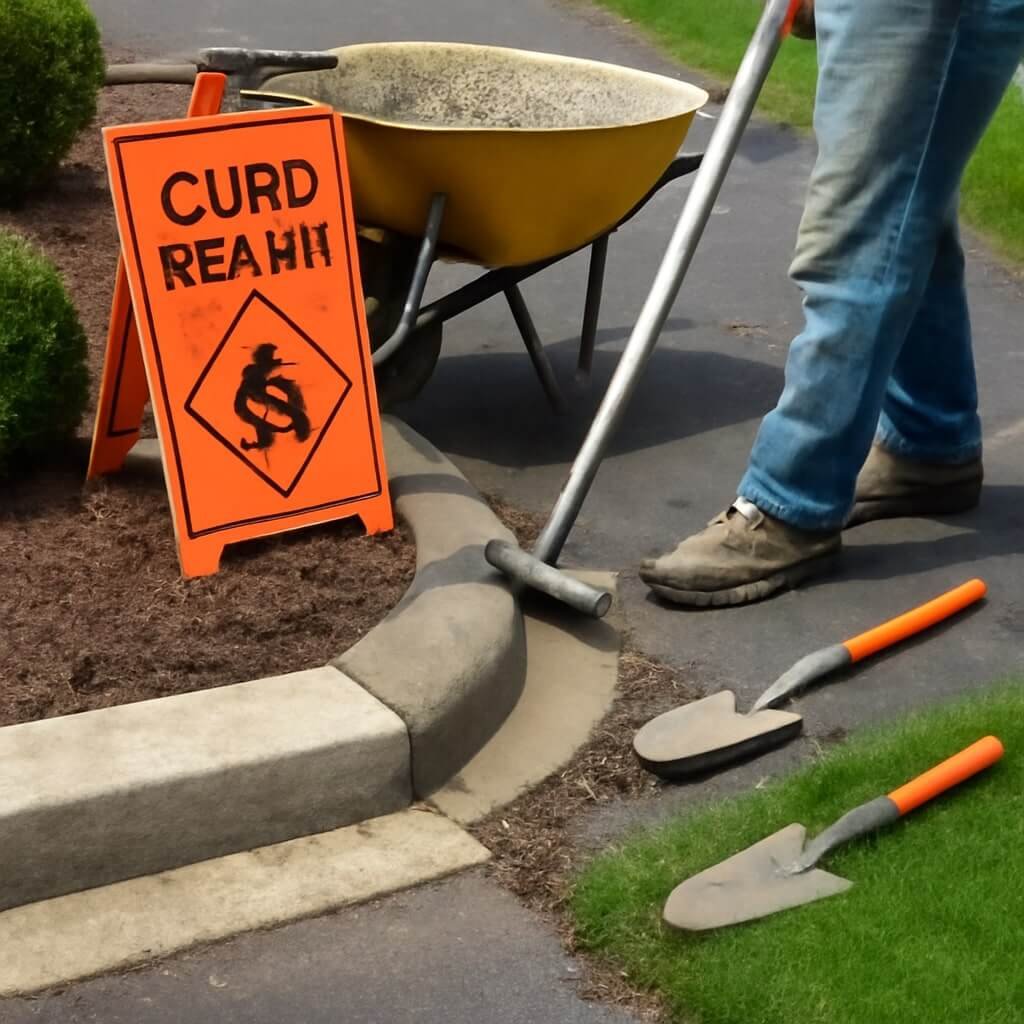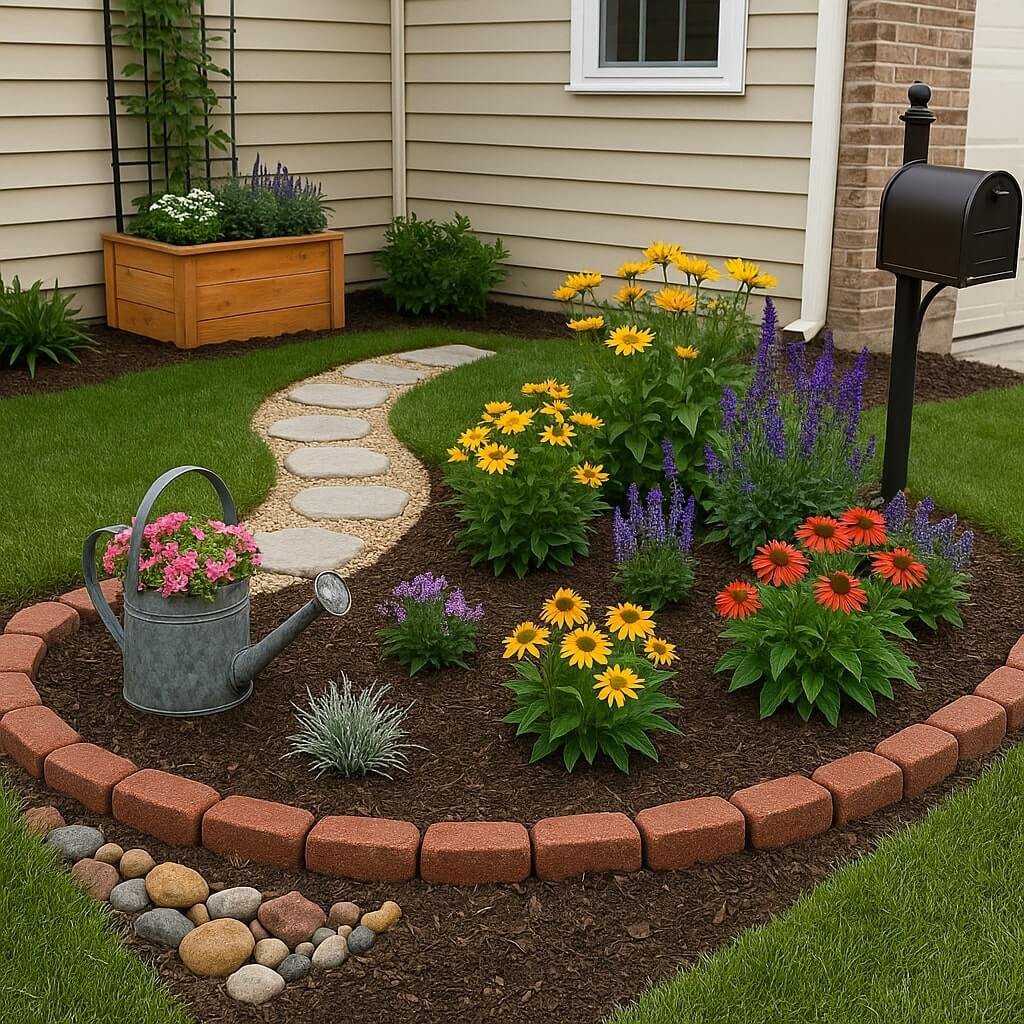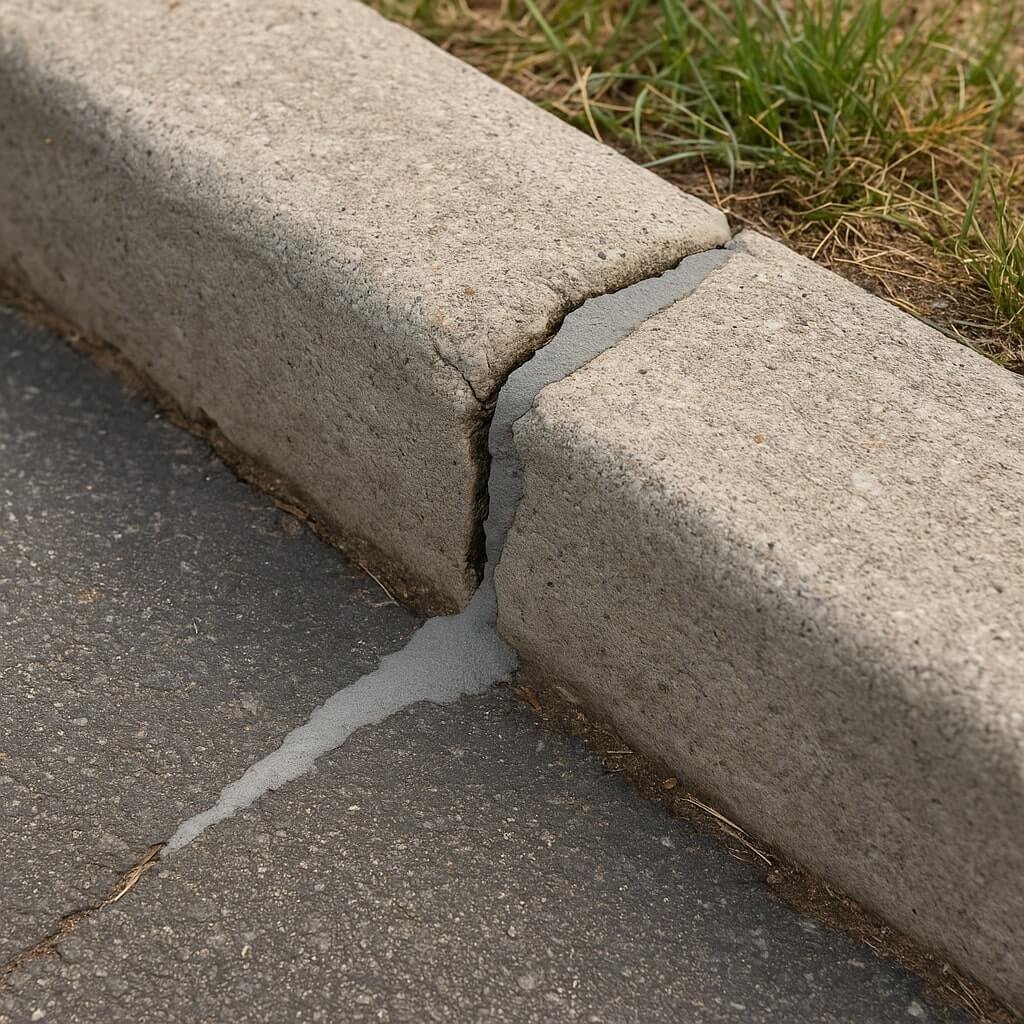Curb improvement involves enhancing or replacing the curb or border of your property. This can include the construction of a new curb, repairing damaged areas, or even installing decorative features such as curbstones or pavement. These improvements not only improve the curb appeal of your home or business but also provide functional benefits, such as better drainage or defined property boundaries.
2. Factors Affecting Curb Improvement Costs

Several factors contribute to the cost of a curb improvement project. Understanding these factors can help you make informed decisions about your project and keep costs in check.
2.1 Material Selection
The materials you choose will play a major role in the cost of your curb improvement. Common materials include concrete, asphalt, and stone. For example, a concrete curb is typically more affordable than a stone curb but may not offer the same visual appeal.
2.2 Labour Costs
Labour costs vary depending on the complexity of the project and the location of your property. Some areas may have higher labour rates, especially in urban environments. Experienced contractors may also charge more, but their expertise can save you time and money in the long run.
2.3 Project Size and Scope
The size and scope of your project will naturally impact the total cost. Larger curb installations or more intricate designs will cost more than simple repairs or straightforward curbs.
3. Average Curb Improvement Costs
Understanding the average cost can help you determine if a project fits within your budget.
3.1 Low-End Cost Estimate
For simple curb repairs or small-scale installations, you can expect costs to be in the range of $5 to $10 per linear foot. This typically involves basic concrete curbs without any special designs.
3.2 Mid-Range Cost Estimate
For higher-quality materials like stamped concrete or asphalt, prices can rise to between $10 and $25 per linear foot. These curbs provide added durability and better aesthetic appeal.
3.3 High-End Cost Estimate
At the high end of the spectrum, for premium materials like natural stone or custom-designed curbs, costs can range from $25 to $50 per linear foot or more. These materials are more visually striking and often used for landscaping or high-end property upgrades.
4. Curb Improvement Project Breakdown
When considering a curb improvement project, it’s important to break down the process to understand how the costs accumulate.
4.1 Preparing the Site
The first step in any curb improvement project is preparing the site. This involves clearing the area, removing old curbs or debris, and levelling the ground. Site preparation can account for 10-20% of the total project cost.
4.2 Choosing the Right Materials
Once the site is ready, you’ll need to choose materials that match your aesthetic vision and budget. Materials like concrete or asphalt are common, but decorative options like brick or stone can significantly increase costs.
4.3 Installation Process
Installation involves setting forms for concrete curbs or laying down asphalt. Depending on the complexity, installation can take a few days to complete. Labor will account for a significant portion of the total cost.
4.4 Post-Installation Maintenance
After installation, your curb may require some maintenance to ensure it remains in good condition. Routine cleaning, sealing, and minor repairs may be necessary, adding to the long-term costs.
5. How to Get the Most Accurate Curb Improvement Estimate
To ensure you receive an accurate estimate, it’s essential to get quotes from multiple contractors and compare costs. A detailed assessment of the site, including measurements, material choices, and design preferences, will provide a clearer picture of the total cost.
6. DIY vs Professional Curb Improvement: Which Is Better?
Many homeowners consider whether to take on curb improvements themselves or hire a professional. While DIY can save on labour costs, it may be time-consuming and challenging, especially for larger projects. A professional contractor will bring expertise, ensuring the project is completed efficiently and to a high standard.
7. Curb Improvement in Different Regions: How Location Impacts Costs
Location plays a significant role in the cost of curb improvement. In urban areas, labour and material costs tend to be higher due to increased demand and the cost of living. In rural areas, labour may be cheaper, but transportation of materials could add to the total cost.
8. How Long Does a Curb Improvement Project Take?
On average, a curb improvement project can take anywhere from a few days to a week, depending on the size and complexity. Larger projects, particularly those that involve specialised materials or intricate designs, may take longer to complete.
9. How to Plan Your Curb Improvement Budget
When planning your budget, factor in all aspects of the project: material costs, labor, permits (if required), and post-installation maintenance. Always allow for a contingency fund to cover unexpected costs.
10. Common Curb Improvement Mistakes to Avoid
Common mistakes in curb improvement include selecting materials that don’t match your home’s aesthetic, underestimating labour costs, and failing to prepare the site properly. Avoiding these mistakes will ensure that your curb improvement project is successful.
11. Cost-Saving Tips for Curb Improvement Projects
- Choose Basic Materials: Opt for simple concrete or asphalt if you’re on a budget.
- Get Multiple Quotes: Always compare quotes from different contractors.
- Plan: Proper planning helps you avoid costly changes during the project.
12. When Should You Consider Upgrading Your Curb?
Consider upgrading your curb if your current curb is cracked, damaged, or outdated. Curb improvement can also be beneficial if you’re planning to sell your property and want to increase its curb appeal.
13. Understanding the Return on Investment (ROI) of Curb Improvement
A well-designed curb can increase the overall value of your home by improving its curb appeal. In some cases, homeowners report that curb improvement leads to a significant increase in property value, making it a worthwhile investment.
14. Frequently Asked Questions (FAQ)
What is the average cost to replace a curb?
How can I save money on curb improvement?
Can I improve my curb by myself?
Is curb improvement a good investment?
How long does curb installation take?
Are there any hidden costs in curb improvement?
Conclusion
Understanding the factors that affect curb improvement costs and properly budgeting for the project is crucial for getting the best results. With the right materials, a clear plan, and the help of skilled professionals, you can enhance your property’s curb appeal and make a valuable investment in your home.



